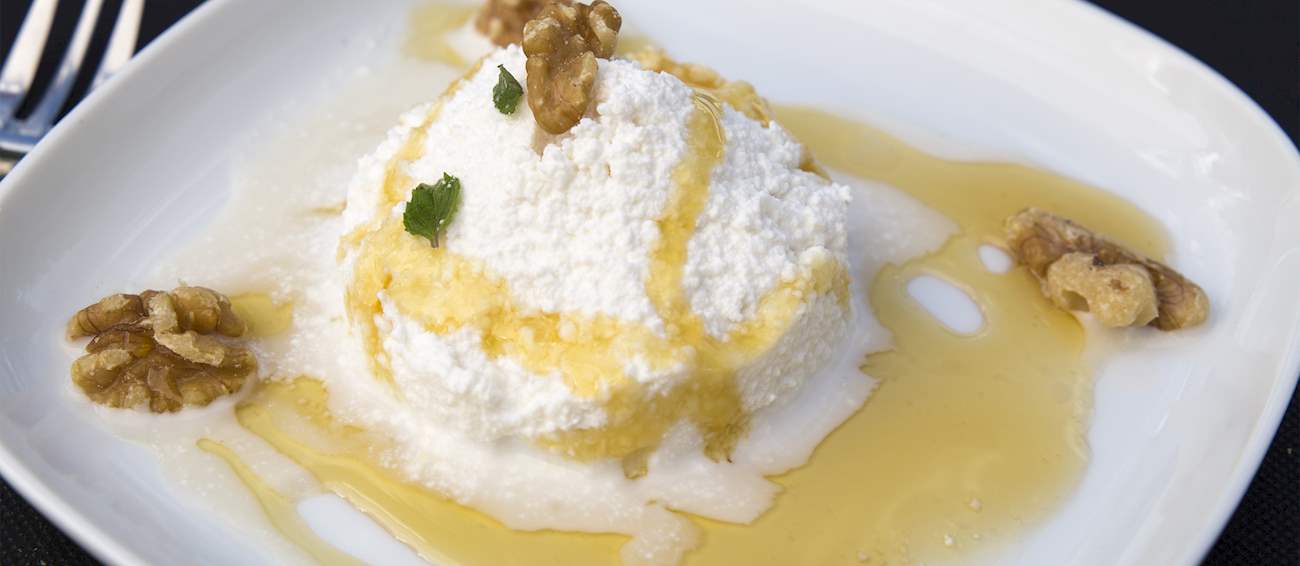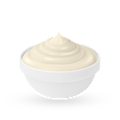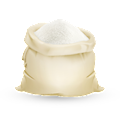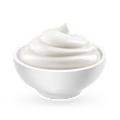MAIN INGREDIENTS
Known simply as tarta de queso or gazta tarta in its native Basque, this simple yet incredibly creamy cheesecake variation is a decades-old local specialty of the La Viña Bar in San Sebastián. The recipe is a simple combination of classic cheesecake ingredients such as sugar, heavy cream, eggs, and cream cheese, but unlike its more popular counterparts, this Basque version does not have any crust.
Instead, it is baked on a high temperature which leaves the outside firm, darker, and somewhat burnt, while the center remains gooey. Basque cheesecake is immensely popular, and while La Viña remains its place of origin, different variations are nowadays found in several patisseries around the world.
MOST ICONIC Basque Cheesecake
View moreIn its basic form, this traditional Catalan dessert is a simple combination of honey and mató (also known as brossat or brull)—a subtly sweet fresh cheese that is made from goat, sheep, or cow milk. The dish is assembled by placing a piece of mató and then generously drizzling it with honey.
A common homemade dessert as well as a regular restaurant dish, mel i mató is easily modified with the addition of nuts, jams, and dry or fresh fruit.
Reminiscent of a cheesecake, quesada pasiega is a traditional Cantabrian creamy cake made with a combination of butter, sugar, milk, flour, eggs, and either ricotta or cheese curds. It is typically flavored with cinnamon and lemon zest. The texture of quesada pasiega is similar to that of a dense pudding.
When baked, it can be served hot or cold. It is recommended to top it with fruit jams in order to make it even more delicious.
Although the term flaó is used in other Spanish regions to denote similar cheese-based specialties, the Ibizan version refers to a dessert consisting of a pastry base that is filled with a combination of fresh cheese, eggs, sugar or honey, citrus zest, and fresh mint.
The cake usually calls for the use of goat or sheep cheese, and it is traditionally flavored with aniseed and anise liqueur. In the past, flaó was typically prepared for Easter, but nowadays it is enjoyed all year round and has become one of the most common desserts on Ibiza.
MAIN INGREDIENTS
Quesadilla Herreña is a traditional dessert from El Hierro, the smallest of the Canary Islands in Spain, invented at the beginning of the 20th century. This sweet pastry is a unique culinary specialty of the island and is deeply rooted in its cultural heritage.
The main ingredients include fresh cheese from El Hierro (queso herreño), flour, sugar, eggs, lemon zest, cinnamon, and aniseed. The fresh cheese is crucial to the recipe, giving the quesadilla its distinctive texture and flavor. Quesadilla Herreña has a rich, creamy texture and a sweet, slightly tangy flavor due to the fresh cheese, with lemon zest and aniseed adding aromatic notes that complement the sweetness.
Greixonera de brossat is a traditional type of cheesecake originating from Mallorca. It's made with sugar, eggs, cinnamon, lemon zest, and brossat (also known as requesón) – fresh cottage cheese made from cow's milk, although ricotta is also a good substitute.
The ingredients are blended until creamy, then poured into a baking dish and baked until firm. Greixonera de brossat is served chilled, ideally dusted with confectioners' sugar and cinnamon. The word greixonera refers to the clay baking dish in which the dessert is prepared.
TasteAtlas food rankings are based on the ratings of the TasteAtlas audience, with a series of mechanisms that recognize real users and that ignore bot, nationalist or local patriotic ratings, and give additional value to the ratings of users that the system recognizes as knowledgeable. TasteAtlas Rankings should not be seen as the final global conclusion about food. Their purpose is to promote excellent local foods, instill pride in traditional dishes, and arouse curiosity about dishes you haven’t tried.







